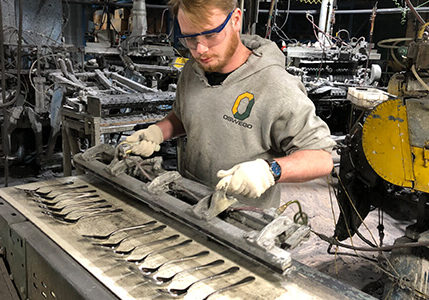Sellers of American-made goods are thriving amid supply-chain chaos — but they can’t escape labor and cost pressures

*Originally posted on Business Insider by Avery Hartmans
Article clip posted below:
When the coronavirus began spreading worldwide last year, it shut down ports and took factories offline while simultaneously sparking a rush on consumer goods. In the US, where the labor market is tight, there are also fewer people to process all the goods coming into the country from overseas, leading to a backlog at the nation’s ports.
And so, in the intervening months, there’s been a greater push to manufacture more goods in the US.
“There’s not a guarantee that if you produce in the United States or North America, that you will be immune to any of this,” Scott Paul, president of the Alliance for American Manufacturing, an industry group that partners with both manufacturers and unions, told Insider. “But there is a better chance that you will be less impacted.”
The labor crunch was very real — even with the promise of higher pay
This mindset is on display at Sherrill Manufacturing in Central New York, which produces Liberty Tabletop, a line of flatware and cookware. Sherrill Manufacturing’s supply chain is “about as vertically integrated as you could possibly imagine,” Greg Owens, the company’s CEO, told Insider.
The company’s products start as a coil or bar of steel that’s made in one of three places: Western New York, Pittsburgh, or Tennessee. That steel is then turned into forks or knives at the company’s manufacturing facility in Sherrill, New York, and boxed up using locally sourced packaging.
Owens said that sales of Sherrill’s flatware doubled in 2020 as more people ate at home and rose another 50% year-over-year in 2021. The biggest problem the company faces now is keeping products in stock.
But there are other challenges, too: Owens estimates that steel prices have doubled since before the pandemic, and he said finding workers to fill open positions is harder than usual. The company has raised wages to attract and retain workers, but filling the 25 positions it added to boost production took a long time, he said.
“We went a year advertising with our payroll company on their program, which puts job postings on 10, 15 different sites,” he said. “Didn’t get one application.”
Read the complete story here.
